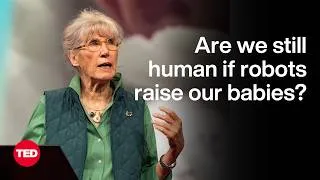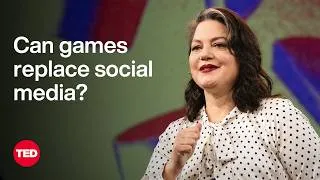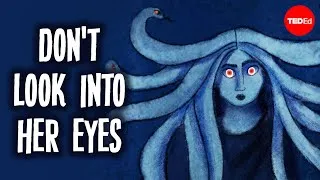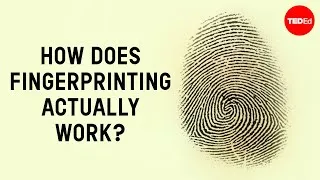The genes you don't get from your parents (but can't live without) - Devin Shuman
2,216,013 views ・ 2021-10-05
请双击下面的英文字幕来播放视频。
翻译人员: Wang Pray
校对人员: Yanyan Hong
00:07
Inside our cells, each of us has
a second set of genes
0
7704
3500
在我们的细胞内,
我们每个人都有第二套基因
00:11
completely separate from the 23 pairs
of chromosomes
1
11204
3375
与我们从父母那里继承的
00:14
we inherit from our parents.
2
14579
1667
23 对染色体完全分开。
00:16
And this isn’t just the case for humans—
3
16413
2333
而且这不仅仅是人类的情况——
00:18
it’s true of every animal,
plant, and fungus,
4
18746
3417
每种动物、植物和真菌,
00:22
and nearly every multicellular
organism on Earth.
5
22163
3583
以及几乎所有地球上
每个多细胞的生物体都是如此。
00:26
This second genome belongs
to our mitochondria,
6
26704
3375
这第二个基因组属于我们的线粒体,
00:30
an organelle inside our cells.
7
30079
2250
是我们细胞内的一个细胞器。
00:32
They’re not fully a part of us,
but they’re not separate either—
8
32329
3542
他们并不完全是我们的一部分,
但它们也不是独立的——
00:35
so why are they so different
from anything else in our bodies?
9
35871
3041
那么,为什么它们与我们身体里的
其他东西如此不同?
00:39
Approximately 1.5 billion years ago,
10
39246
3000
大约 15 亿年前,
00:42
scientists think a single-celled organism
engulfed the mitochondria’s ancestor,
11
42246
5875
科学家认为一个单细胞生物体
吞噬了线粒体的祖先,
00:48
creating the predecessor
of all multicellular organisms.
12
48246
3833
进而创造了所有多细胞生物的前身。
00:52
Mitochondria play an essential role:
13
52412
2459
线粒体起着至关重要的作用:
00:54
they convert energy from the food we eat
and oxygen we breathe
14
54871
3750
它们从我们吃的食物
和呼吸的氧气中的能量
00:58
into a form of energy our cells can use,
which is a molecule called ATP.
15
58621
5667
转化为我们细胞可以使用的能量形式,
这就是一种叫做 ATP 的分子。
01:04
Without this energy,
our cells start to die.
16
64663
3000
没有这种能量,
我们的细胞就会开始死亡。
01:07
Humans have over 200 types of cells,
17
67829
2917
人类有超过 200 种类型的细胞,
01:10
and all except mature red blood cells
have mitochondria.
18
70746
4542
而除了成熟的红细胞外,
都有线粒体。
01:15
That’s because a red blood cell’s job
is to transport oxygen,
19
75288
4000
这是因为红细胞的工作是运输氧气,
01:19
which mitochondria would use up before
it could reach its destination.
20
79288
4083
而线粒体在它到达目的地之前就会耗尽。
01:23
So all mitochondria use oxygen
and metabolites to create energy
21
83871
4917
因此,所有线粒体都使用氧气
和代谢物来产生能量,
01:28
and have their own DNA,
22
88788
2333
并有自己的 DNA 。
01:31
but mitochondrial DNA varies more
across species than other DNA.
23
91121
5333
与其他 DNA 相比,
线粒体 DNA 在不同物种间的差异更大。
01:36
In mammals, mitochondria usually
have 37 genes.
24
96829
4125
在哺乳动物中,
线粒体通常有 37 个基因。
01:40
In some plants, like cucumbers,
mitochondria have up to 65 genes,
25
100954
5334
在一些植物中,如黄瓜,
线粒体有多达 65 个基因,
01:46
and some fungal mitochondria have only 1.
26
106288
3041
而一些真菌的线粒体只有 1 个。
01:49
A few microbes that live
in oxygen-poor environments
27
109579
3459
一些生活在贫氧环境中的微生物
01:53
seem to be on the way to losing
their mitochondria entirely,
28
113038
3791
似乎正在走向完全失去
他们的线粒体的路上,
01:56
and one group, oxymonad monocercomonoides,
already has.
29
116996
4792
而类单鞭滴虫属的这些生物
已经开始没有线粒体了。
02:02
This variety exists because mitochondria
are still evolving,
30
122288
4000
这种多样性的存在
是因为线粒体仍在进化中,
02:06
both in tandem with the organisms
that contain them,
31
126288
2791
与含有它们的生物体,
02:09
and separately, on their own timeline.
32
129079
2625
分别在自己的时间线上同步进行。
02:11
To understand how that’s possible,
33
131871
2000
要了解这一点是如何实现的,
02:13
it helps to take a closer look at what
the mitochondria inside us are doing,
34
133871
4458
仔细看看我们体内的
线粒体在做什么会有所帮助,
02:18
starting from the moment we’re conceived.
35
138329
2584
从我们受孕的那一刻开始。
02:21
In almost all species, mitochondrial DNA
is passed down from only one parent.
36
141288
5791
在几乎所有物种中,线粒体 DNA
只从父母一方传下来。
02:27
In humans and most animals,
that parent is the mother.
37
147121
3667
在人类和大多数动物中。
该受体是母亲。
02:31
Sperm contain approximately
50 to 75 mitochondria in the tail,
38
151079
4709
精子的尾部大约含有 50 至 75 个线粒体,
02:35
to help them swim.
39
155788
1166
来帮助他们游动。
02:37
These dissolve with the tail
after conception.
40
157079
3042
这些东西在受孕后与尾巴一起解体。
02:40
Meanwhile, an egg contains thousands
of mitochondria,
41
160413
3458
同时,一个卵
含有成千上万的线粒体,
02:43
each containing multiple copies
of the mitochondrial DNA.
42
163871
3458
每个都含有多组线粒体 DNA 。
02:47
This translates to over 150,000 copies
of mitochondrial DNA
43
167496
5042
这意味着我们体内
超过 15 万份的线粒体 DNA
02:52
that we inherit from our mothers,
44
172538
1875
是从母亲那里继承的。
02:54
each of which is independent
and could vary slightly from the others.
45
174413
4000
每一个都是独立的,
且彼此之间可能略有不同。
02:58
As a fertilized egg grows and divides,
46
178704
2542
随着受精卵的生长和分裂,
03:01
those thousands of mitochondria are
divvied up into the cells
47
181246
3583
这些数以千计的线粒体被分配到
03:04
of the developing embryo.
48
184829
1584
发育中的胚胎细胞中。
03:06
By the time we have
differentiated tissues and organs,
49
186746
3167
当我们有了分化的组织和器官,
03:09
variations in the mitochondrial DNA are
scattered at random throughout our bodies.
50
189913
5791
线粒体 DNA 的变异是
随机地散布在我们的身体里。
03:15
To make matters even more complex,
51
195913
2166
使之更复杂的是,
03:18
mitochondria have a separate replication
process from our cells.
52
198079
3959
线粒体有一个
与我们细胞不同的独立复制。
03:22
So as our cells replicate by dividing,
mitochondria end up in new cells,
53
202163
5041
因此,当我们的细胞通过分裂进行复制时,
线粒体最终出现在新细胞中,
03:27
and all the while they’re fusing
and dividing themselves,
54
207204
3750
而它们在自己的时间轴上
03:30
on their own timeline.
55
210954
1500
融合和分裂。
03:32
As mitochondria combine and separate,
56
212829
2584
随着线粒体的结合和分离,
03:35
they sequester faulty DNA or mitochondria
that aren’t working properly for removal.
57
215413
5583
它们封存了有问题的 DNA 或
对不正常工作的线粒体进行清除。
03:41
All this means that the random selection
of your mother’s mitochondrial DNA
58
221204
4375
所有这一切意味着,
你在出生时从母亲那随机
03:45
you inherit at birth
59
225579
1625
继承的线粒体 DNA
03:47
can change throughout your life
and throughout your body.
60
227204
3667
会在你的一生中
在你身上发生改变。
03:52
So mitochondria are dynamic and,
to a degree, independent,
61
232329
4125
所以线粒体是动态的,而且,
在某种程度上是独立的,
03:56
but they’re also shaped
by their environments: us.
62
236454
3209
但它们也被他们的环境所塑造:我们。
03:59
We think that long ago,
63
239871
1292
我们认为,很久以前,
04:01
some of their genes were transferred
to their host’s genomes.
64
241163
3625
它们的一些基因被转移到
宿主的基因组中。
04:04
So today, although mitochondria
have their own genome
65
244788
3250
所以今天,虽然线粒体
有自己的基因组,
04:08
and replicate separately from the cells
that contain them,
66
248038
3000
并与包含它们的细胞分别进行复制,
04:11
they can't do this without
instruction from our DNA.
67
251038
3791
如果没有我们的 DNA 指示,
它们就不能这样做。
04:15
And though mitochondrial DNA
is inherited from one parent,
68
255038
3708
而尽管线粒体 DNA
是由父母一方遗传的,
04:18
the genes involved in building
and regulating the mitochondria
69
258746
3333
参与建立和调节线粒体的基因
04:22
come from both.
70
262079
1167
来自父母双方。
04:23
Mitochondria continue to defy
tidy classification.
71
263746
3583
线粒体继续藐视着井井有条的分类。
04:27
Their story is still unfolding
inside of each of our cells,
72
267454
3875
它们的故事仍在
我们每个人的细胞里展开,
04:31
simultaneously separate
and inseparable from our own.
73
271329
3709
同时独立且与我们自己不可分割。
04:35
Learning more about them can
both give us tools
74
275204
2292
更多地了解它们,既可以给我们提供
04:37
to protect human health in the future,
and teach us more about our history.
75
277496
4708
在未来保护人类健康的办法,
还能让我我们更多地了解我们的历史。
New videos
Original video on YouTube.com
关于本网站
这个网站将向你介绍对学习英语有用的YouTube视频。你将看到来自世界各地的一流教师教授的英语课程。双击每个视频页面上显示的英文字幕,即可从那里播放视频。字幕会随着视频的播放而同步滚动。如果你有任何意见或要求,请使用此联系表与我们联系。







